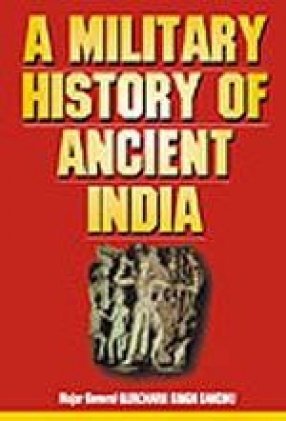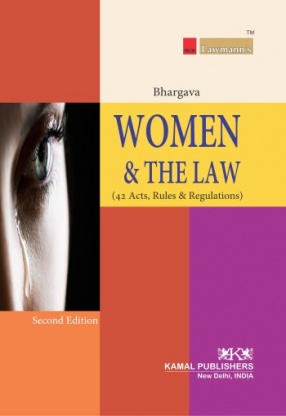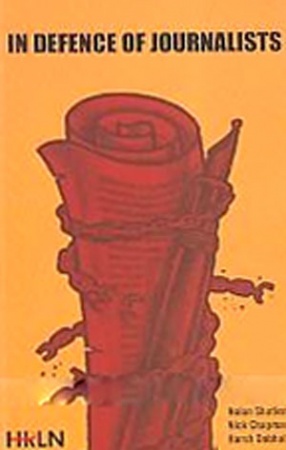India’s military history goes back to the Indus or Harappan people who flourished 5,000 years ago; the history of military fortifications in the country goes back even further. It remains, however, a subject largely neglected by the country’s historians. This book traces the evolution of India’s military tactics and strategy during the ancient period and till the eleventh century ad by examining available sources from a dispassionate, professional military perspective. The author analyses the military factors which led to the end of the Harappan civilization. The Rig Veda contains a great deal of information about battles fought by the Aryans. The author makes use of the description of the first recorded battle, the Dasrajan War fought around 1900 bc, as a basis for reconstructing the strategy and tactics employed by the combatants. The portion of Kautilya’s Arthashastra dealing with matters military has been examined at some length because it exercised a profound influence on the tactics of Indian warfare for over a millennium. Such loyalty to the injunctions of the shastras bred extreme conservatism in military doctrine and often effectively prevented progress and innovation in the art of war. Learning from experience, the Guptas repudiated Kautilya’s static concept and successfully defended the country against the Hunas. This work traces how a subsequent reversion to tradition and the antiquated Kautilyan system led to tragic consequences. A major misconception which the author repudiates is that Indian kingdoms tamely knuckled under invading armies. Facts are quite different. Alexander was fought to a stand-still by the gallant Paurava ruler of a tiny state. The rampaging conqueror of Persia had to enter into a truce and an alliance after agreeing to hand over a part of the conquered territory. A memorable triumph of Indian arms was achieved by Skandagupta who so decisively routed a mounted force of 300,000 Hunas in ad 456 that it took them half-a-century to gather courage for another intrusion. Several other Indian soldier-kings displayed commendable strategic ability and tactical competence and won great victories, including Lalitditya of Kashmir, Chalukya Pulakesin II (7th century), Rashtrakuta kings Dhruva (8th century), Govinda III (8th-9th centuries), Indra III (10th century), and others. The onslaughts of the triumphant armies of Islam were successfully frustrated for over 75 years by small states and republics beyond the Khaiber and Bolan passes. Only after more than a dozen abortive attempts did the Caliph’s armies find a weak spot in Sind. That incursion too was opposed tooth and nail, effectively contained, and practically eliminated. In fact, the historical truth is that ancient India faced fewer invasions than several other parts of the world, and its response to outside invasions was exceptionally robust. It was not the Hindu art of war which was defective but the Indian people’s aversion to change and an emotional attachment to tradition which were their undoing. A unique and exceptionally commendable fact about warfare in ancient India was its success in bringing about some restraint and rules for a humane conduct of war many centuries before the rest of the world began to even think of such a dimension. At the turn of the new millennium, war continues to decide the fate of nations despite brave — alas, hollow — words to the contrary. The knowledge of a country’s military history is therefore essential for its policy-makers, politicians, bureaucrats, historians, political scientists and professional soldiers alike for organizing its successful defence.
A Military History of Ancient India
$74.70
$83.00
In stock
Free & Quick Delivery Worldwide
All orders amounting to US$ 50 or more qualify for Free Delivery Worldwide. For orders less than US$ 50, we offer Standard Delivery at $14 per book.
ABOUT THE AUTHOR Gurcharn Singh Sandhu
Major General Gurcharn Singh Sandhu (b. December 1922) graduated with a first class honours from Government College, Lahore; his subjects of study were History and Political science. He went on to obtain a Master's degree in English before joining the Army in 1944. He was commissioned into the 18th King Edward's Own Cavalry in 1945 and saw military service during World War II on the Northwest Frontier. In 1948, he attended the first Staff College course at Wellington. As a staff officer at HG 1 Armoured Division, he took part in the Hyderabad Police Action in 1948. In 1959 he was selected to attend a year-long Armor Officers' Advance Course at the US Armor School at Fort Knox. Soon after the 1962 India-China War he was posted as Military Assistant to the newly-appointed Chief of the Army Staff, General J.N. Chaudhuri, and continued in that appointment during the 1965 Indo-Pak War. He raised an armoured brigade at Siliguri before India's 1971 war with Pakistan and took part in operations against the Pak Pakistan (now Bangladesh). He was awarded a Param Vasisht Seva Medal for his service during the 1971 war. After a course at the National Defence College, he commanded another armoured brigade followed by the command of an infantry division. His last appointment in the Indian Army was as head of the Armoured Corps at army Headquarters from where he retired early in 1978. Since his retirement, General Sandhu has been researching and writing books on military history. His published books include The Indian Cavalry, The Indian Armour and a Military History of Ancient India.
reviews
0 in total
Review by Anonymous
Be the first to review “A Military History of Ancient India” Cancel reply
You must be logged in to post a review.
Bibliographic information
Title
A Military History of Ancient India
Author
Edition
1st ed.
Publisher
Vision Books Pvt. Ltd., 2000
ISBN
8170943752
Length
580p.
Subjects
more by Gurcharn Singh Sandhu see more
similar bookssee more
Women & The Laws
$36.00
$40.00
In Defence of Journalists
$43.20
$48.00
Perspactives in Sports Education
$11.70
$13.00






There are no reviews yet.